Australian Tropical Rainforest Plants - Online edition
Lepidozamia hopei (W.Hill) Regel
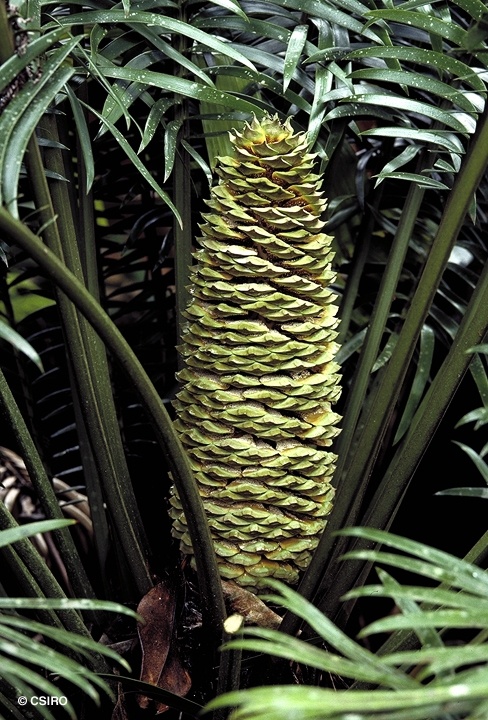
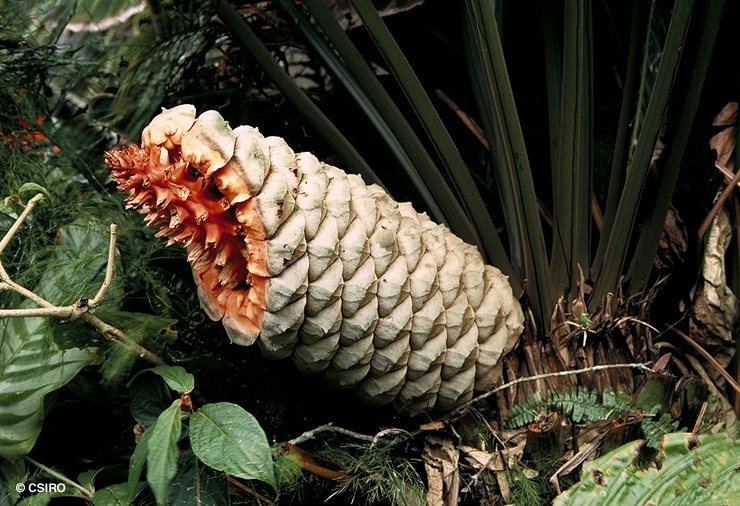
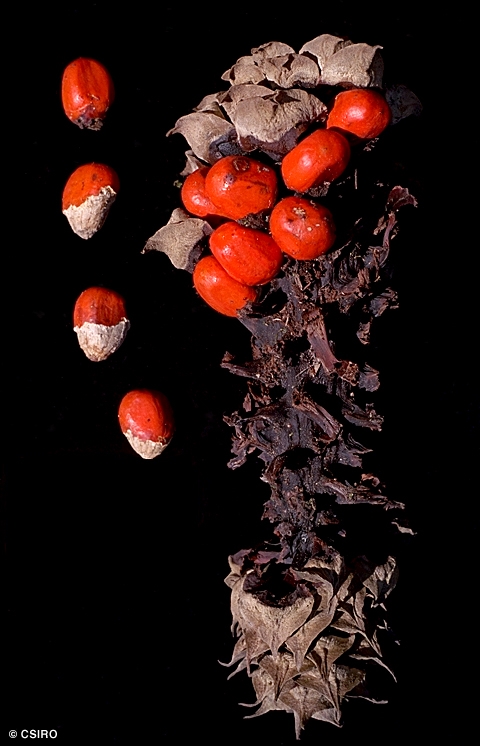
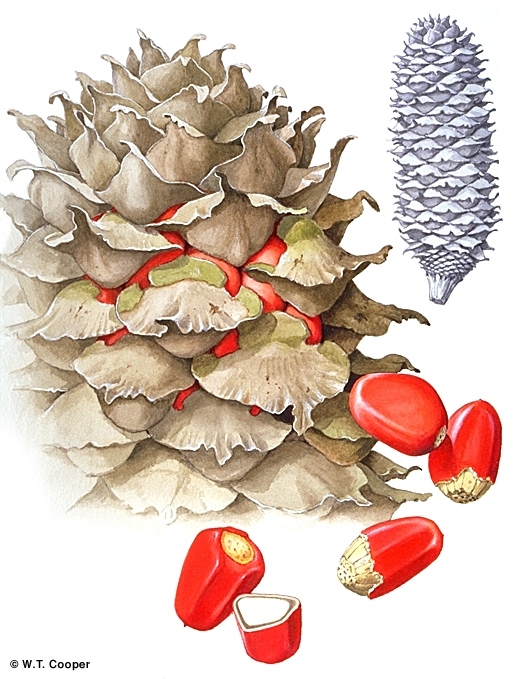

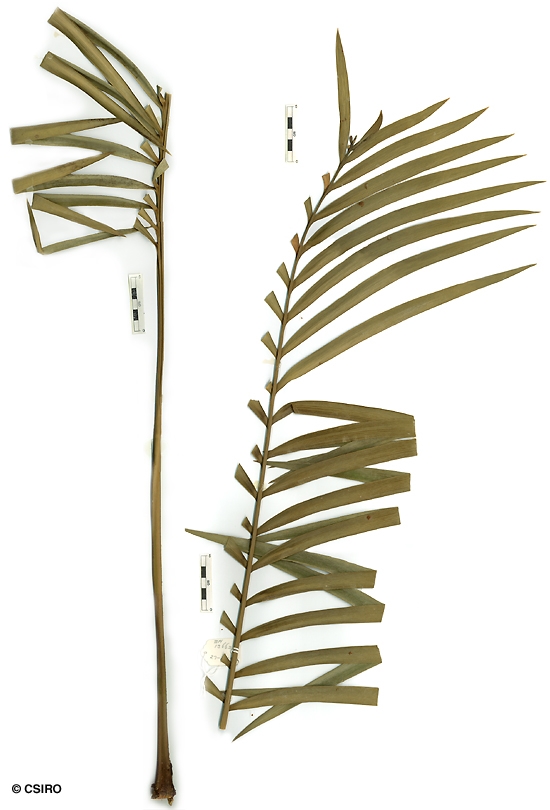

Regel, E.A. von (1876) Gartenflora 25 : 5.
Zamia Palm; Hope's Cycad; Palm, Zamia
Male flowers: Flowers (microsporophylls) in a cone about 25-30 x 20 cm. Female flowers: Flowers (sporophylls) also produced in a cone, probably of similar dimensions.
Fruits produced in a large ovoid cone about 40-60(or more) x 20-25(-30) cm. Seeds covered with a bright red sarcotesta when ripe, seeds about 4-5.5(-6.2) x 2.5-3.5 cm.
First leaf stage: leaflet blades linear, about 8-14 in each compound leaf. Root swollen, carrot-like (Daucus carota). At the tenth leaf stage: leaflets linear, glabrous, sessile, subopposite, about 24-50 in the compound leaf, about 10-15 parallel veins run from base to apex. Stem remaining very short and swelling at or below ground level. Compound leaf rhachis ending in a mucronate structure. Compound leaf including the petiole and rhachis about 1 m long. Seed germination time 228 to 382 days.
Endemic to NEQ, restricted to the area between Cape Tribulation and Cardwell. Altitudinal range from near sea level to 600 m. Grows as an understory tree in well developed lowland and upland rain forest.





